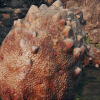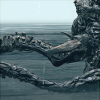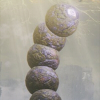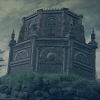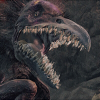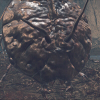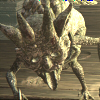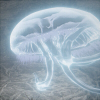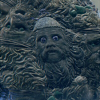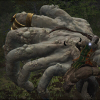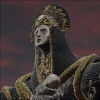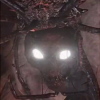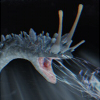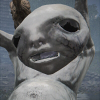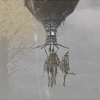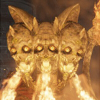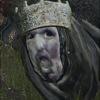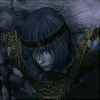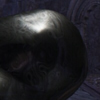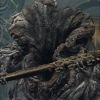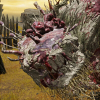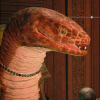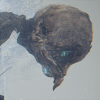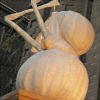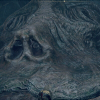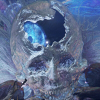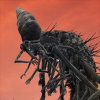
By Jonathan Wojcik and Rev Storm
ENTRY 26: MALFORMED STARS
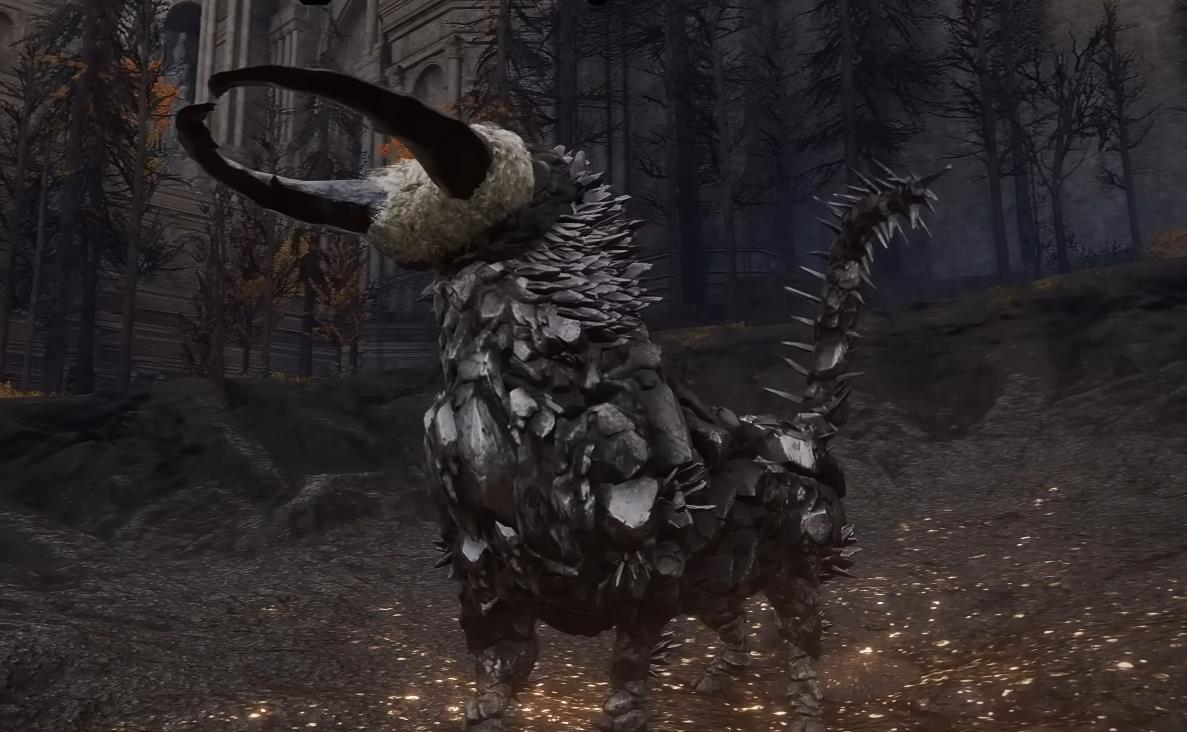
We mentioned at some point or other that in the world of Elden Ring, "stars" are actually living entities, or at least believed to be. It could just as easily be that Wizards are full of nonsense and just don't know the difference between a giant ball of burning plasma and cosmic monsters that occasionally fall out of the sky, for instance, and this here thingy is officially known as a
Fallingstar Beast. This creature has a quadrupedal body that's almost lionlike, covered entirely in black crystalline shards, but its head is more arthropod-like, round and furry with no facial features other than a pair of large, curved mandibles. It's most of all like the head of an antlion larva!
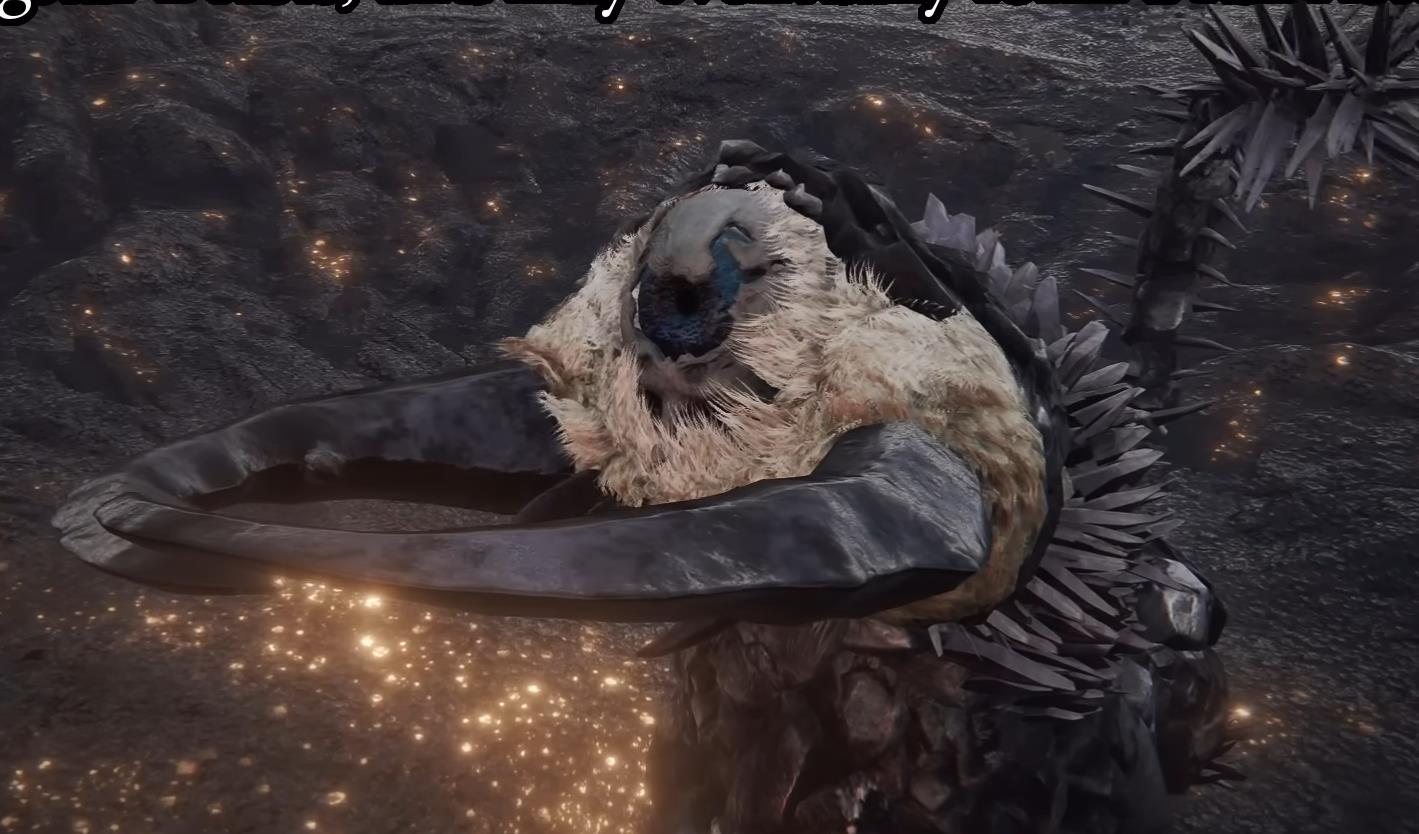
...But some of these beasts are a bit larger, and they have something strange going on. A dome of bone is emerging from the top of the head, and it's roughly broken open to reveal a big, brightly glowing blue eye, a feature that connects it to the most fantastically monstrous boss in the game:
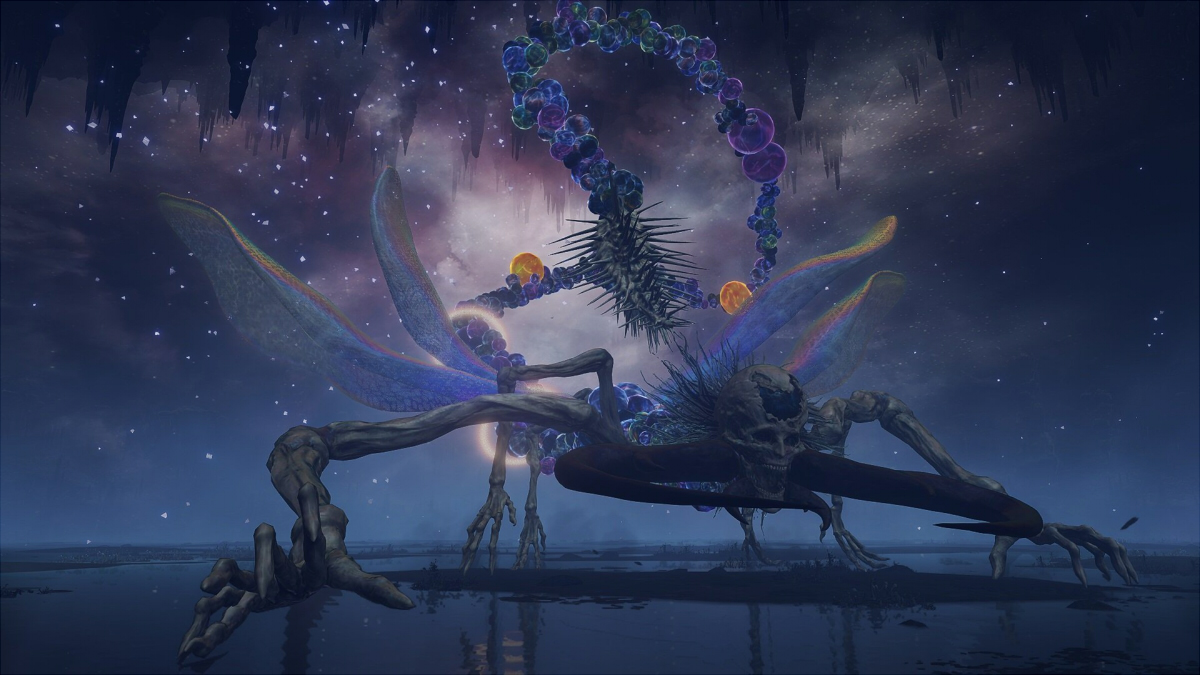
"A malformed star born in the flightless void far away. Once destroyed an Eternal City and took away their sky."
...What do you even DO walking in on this? The giantic cave with the impossible view of outer space is weird enough, and then there's just,
that. That is a
serious that. It's got the anatomical plan of a flying insect, but the long, winding body and tail is a chain of beautifully colorful orbs clumped asymmetrically together like a cluster of psychedelic cosmic grapes. That's all I can think of here, sorry, grapes. A bubbly wobbly chain of all differently sized glowing spheres, maybe also like miniature planets, or gigantically enlarged atoms?
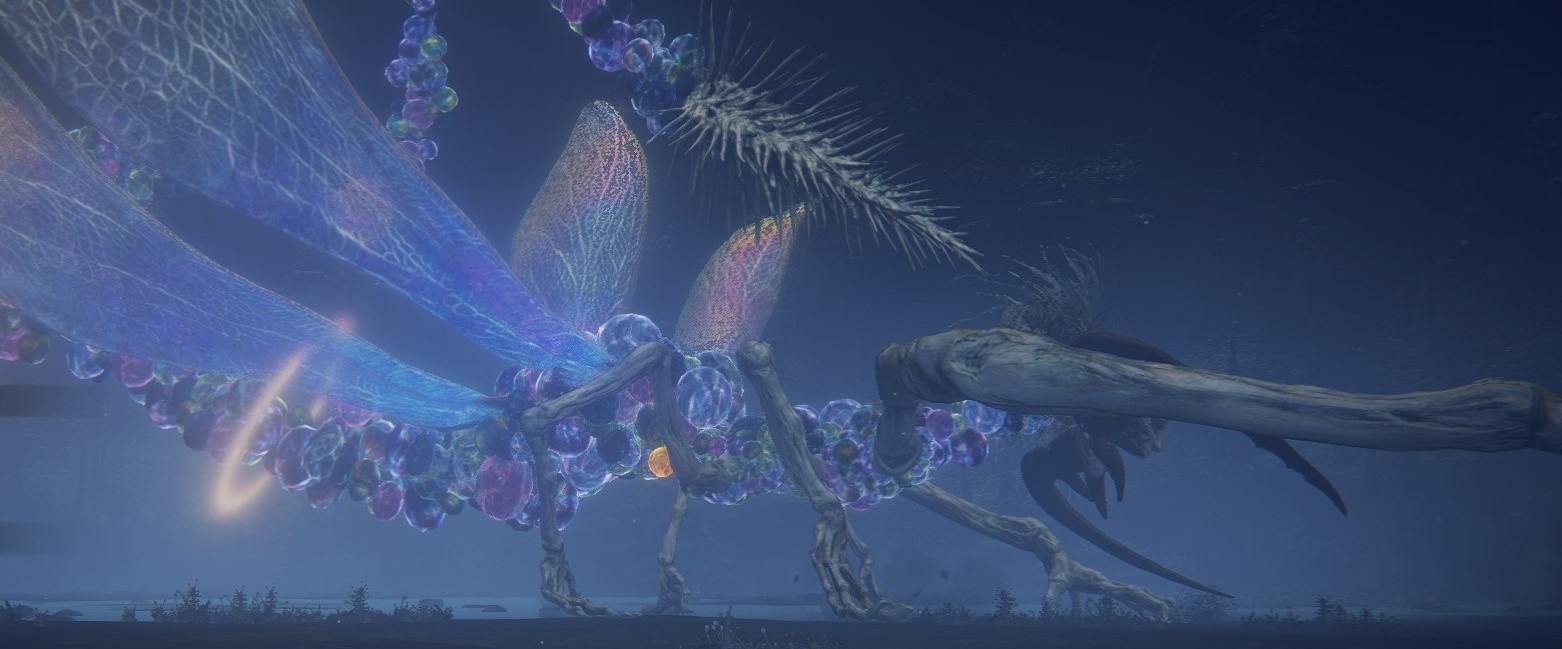
There are four lacey insect wings with a positively stunning iridescent sheen to them, maybe the most gorgeously rendered I've ever seen in 3-d, but that's where the trippy color scheme ends. The end of the colorful cosmic berry-vine tail is a long, black spine thickly covered in thin needly papillae, deeply unpleasant looking to get hit with, and the creature walks on six huge, grey, humanoid arms with skin so thin and taught you can see the individual phalanges of the fingers.
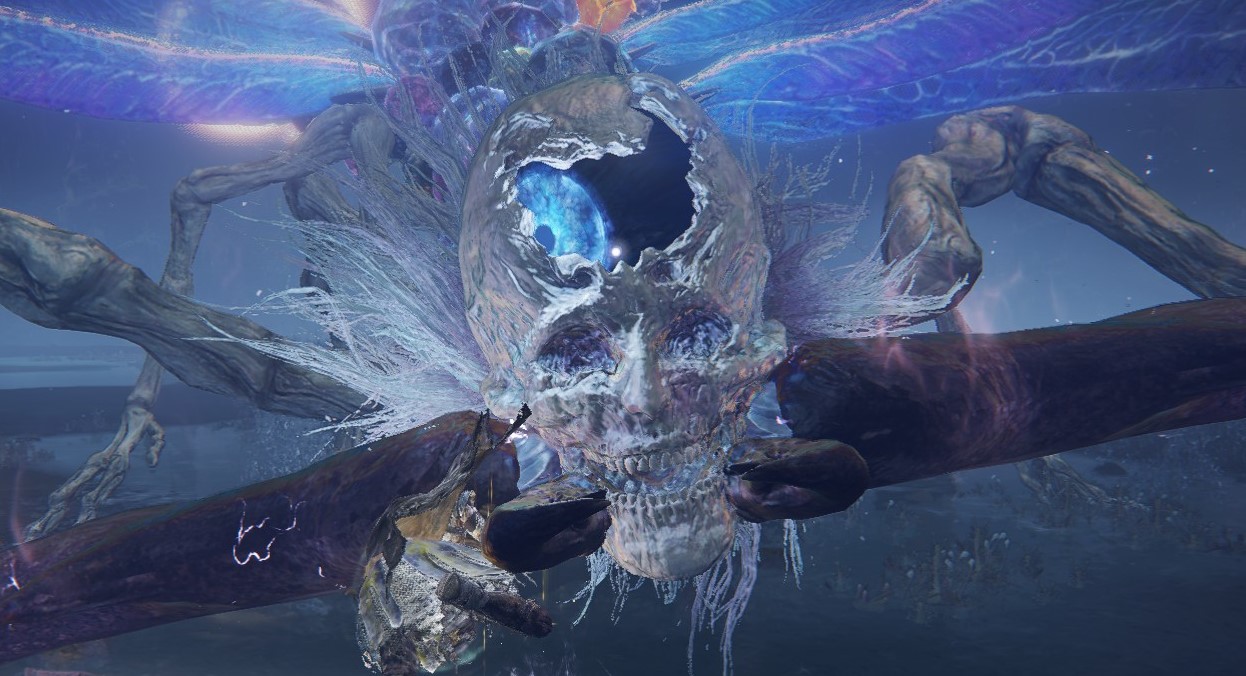
Then, there's the nearly skeletal humanoid head, a withered grey corpse face with lipless jaws, sunken eyeless sockets, whispy white hair and that same lovely blue retina floating in the darkness of its caved-in skull, just what we were seeing in the fallingstar beast, which surely means that this is the mature form? This bizarre hollow cyclops skull is completed by black insect mandibles of extreme proportion even for the rest of the creature, almost as long as the wings!
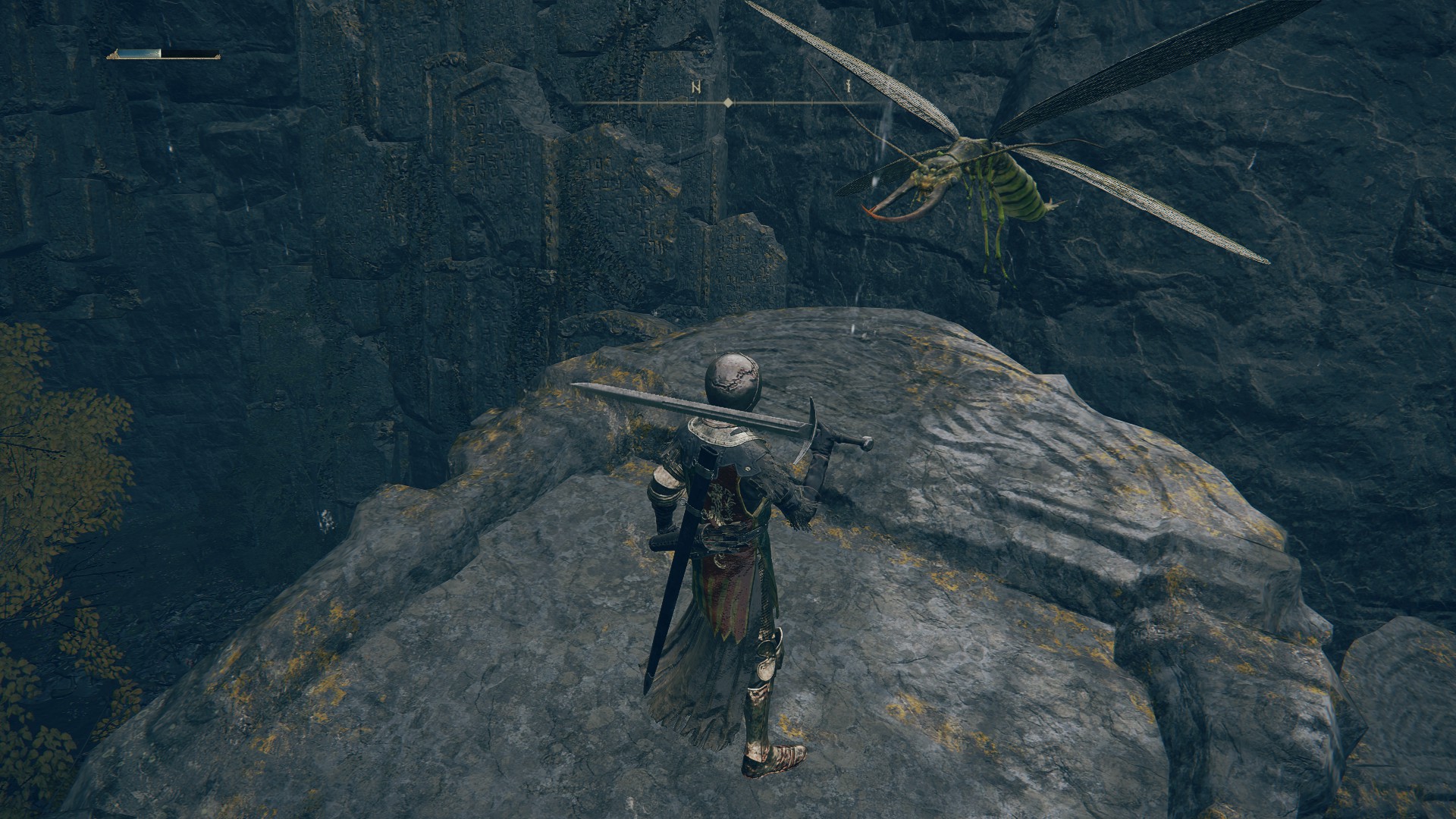
It's an overall body shape remarkably similar to what players still erroneously know as "giant dragonflies," but they don't look anything at all like actual dragonflies, because they're not! They're
dobsonflies, whose Japanese name would have most literally translated to "snake dragonfly," which doesn't work in English, and I guess NOBODY involved in localization cared to double check what a "snake dragonfly" actually is. Perhaps they just assumed it was invented? The first appearance dobsonflies have ever gotten in any kind of media, to my knowledge, and they've been credited under the wrong name!
Why the similarity to "stars," though? What on Earth does that mean?? Was the evolution of the Dobsonfly subtly influenced by these entities all along? Or, somehow, for some reason, is it the other way around? It's equally odd that the star has a humanlike face and arms, too, or that its larval form has a mammal-like body structure. How did all these disparate zoological elements get mixed in to these entities?
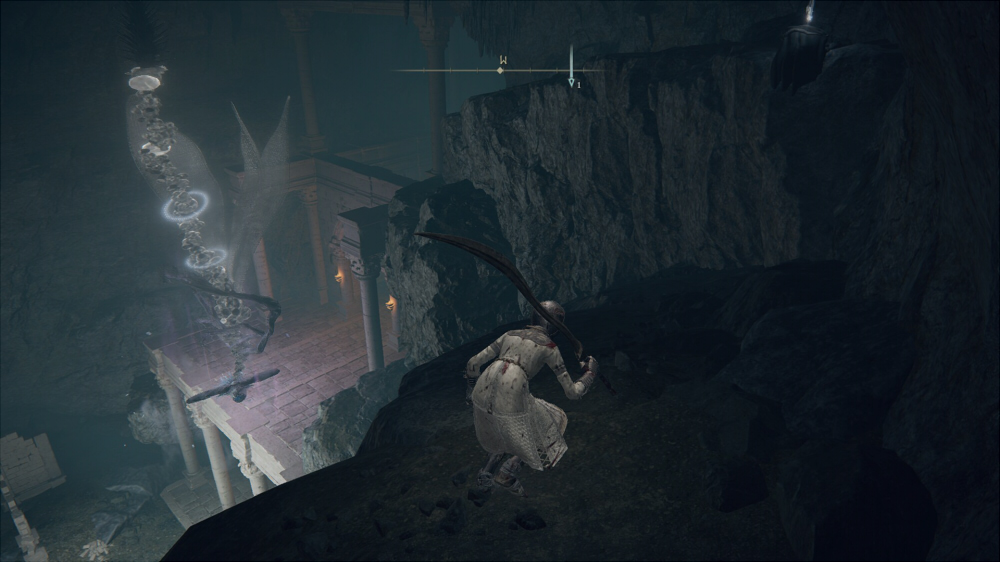
It's not a one-off fluke, either; you can find other, identical creatures hanging upside-down in some subterranean locales, though their orbs and wings are drably grey. It may be that these are still developing, just recently molted from their larval forms. An insect, after molting, usually has to hang in place for a while as its soft new body hardens and its wings spread out, which can take several hours. How long does it take a malformed star, then? Years?
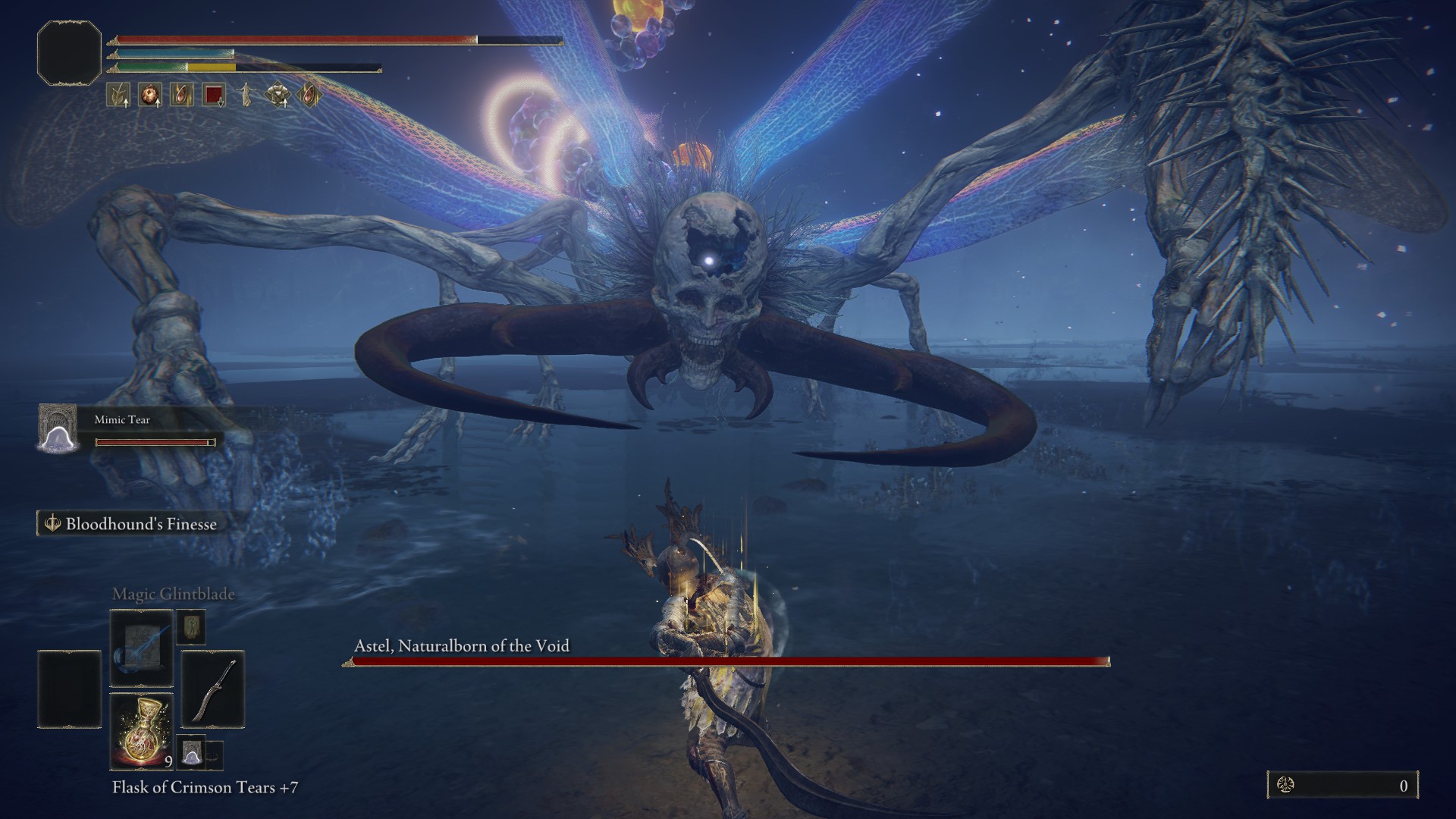
The star we get to face in its full majesty is known as
Astel, Naturalborn of the Void, who arrived directly from space, though there's yet another slight recolor in the game known as
Astel, Stars of Darkness. So these are a "species," of sorts, but again, I have to wonder if they naturally look this way or only took this shape after their arrival. I'm not sure we'll ever know!
NAVIGATION:
